The other day, I facilitated a group session for a client. Discussions are sometimes tense with this group and it often feels difficult for the participants to share openly. Discussions are guarded and past brainstorming sessions have proven laborious.
Over the Summer, a friend of mine inspired me by sharing an exercise he does with groups during a wilderness camp using pebbles. Each participant chooses pebbles and describes the group with them. He usually does this with small groups and my group was a bit larger than what he described. I felt inspired by the concept but wasn’t prepared to take the plane with a backpack full of pebbles and symbolically, it didn’t seem like something I wanted to do!
In replacement of pebbles, I had the following idea: I bought 255 2×1 Lego bricks in 15 different colours.
I set them out on a little table in the middle and asked the participants to represent the group and their relationship to it. I didn’t do any skills building or mention anything other than giving them that task. All participants were able to respond. One person took a handful of bricks and threw them on the floor and said “chaos”. Another spontaneously started explaining why he used a particular colour. This prompted the next participant to explain why he had connected two bricks.
We had many discussion and lunch before we moved on to the second part of the discussion: aspirations. I asked them to represent themselves with one or multiple bricks and then explain their aspirations for the group.
This time, the models were a little more elaborate and participants spontaneously asked questions about the model.
All in all, I was extremely surprised by the amount of information that was shared using such simple bricks. Initially, I had planned to use 1×1 and that would have been a mistake because I would have limited connection options. I was also surprised to find that despite not having given any process or skills building, a lot of Lego Serious Play concepts spontaneously emerged. Finally, despite the tense atmosphere, all participants seemed to enjoy the exercise and got involved.
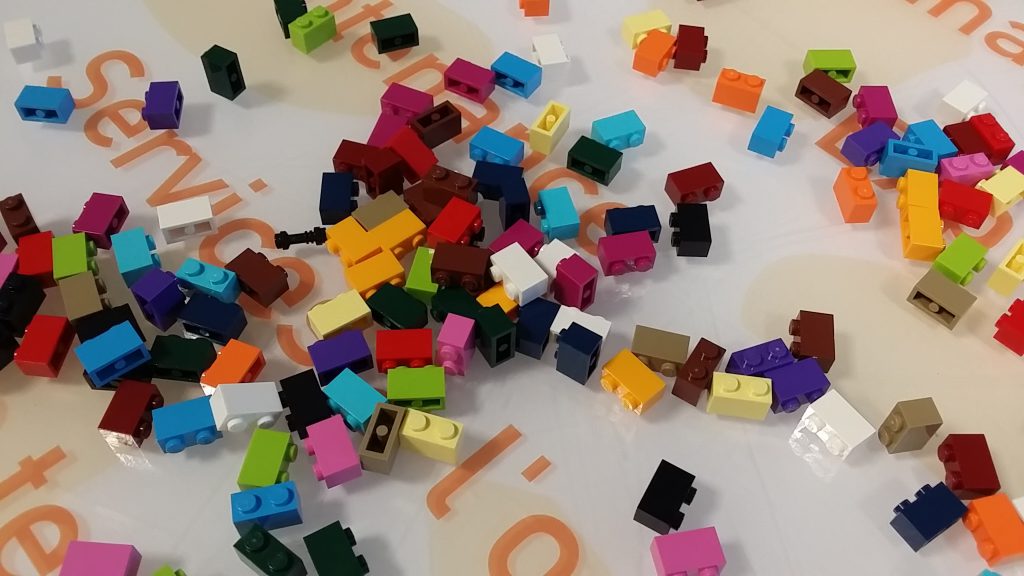
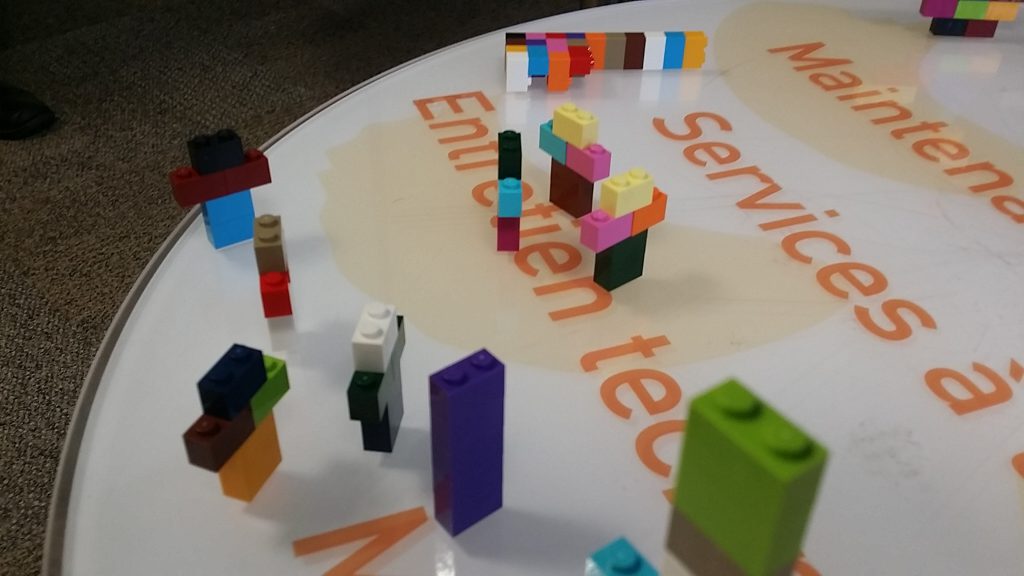
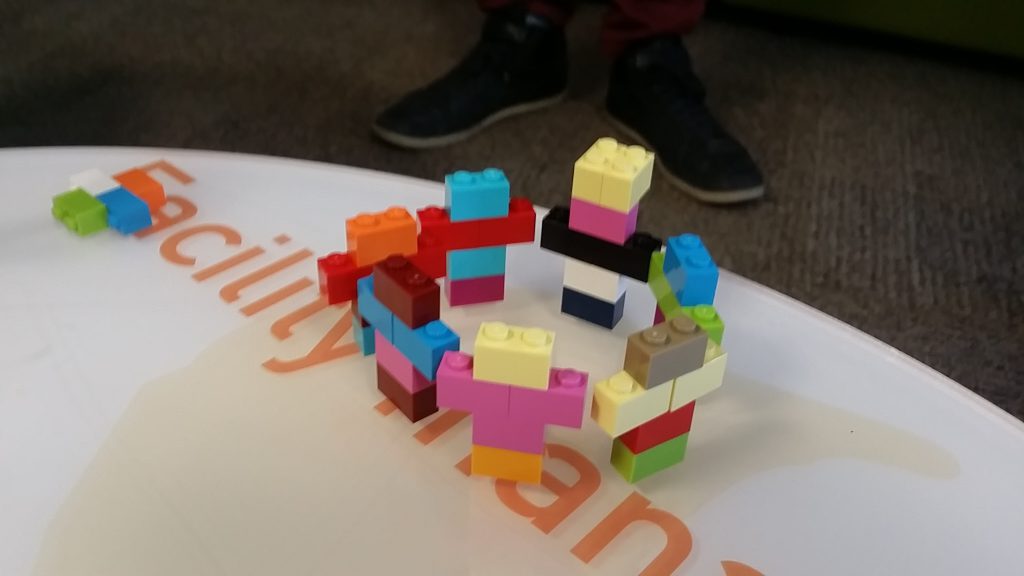
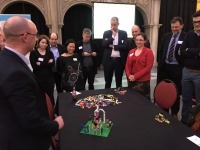
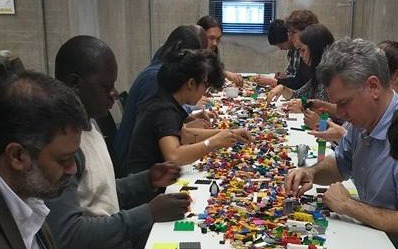

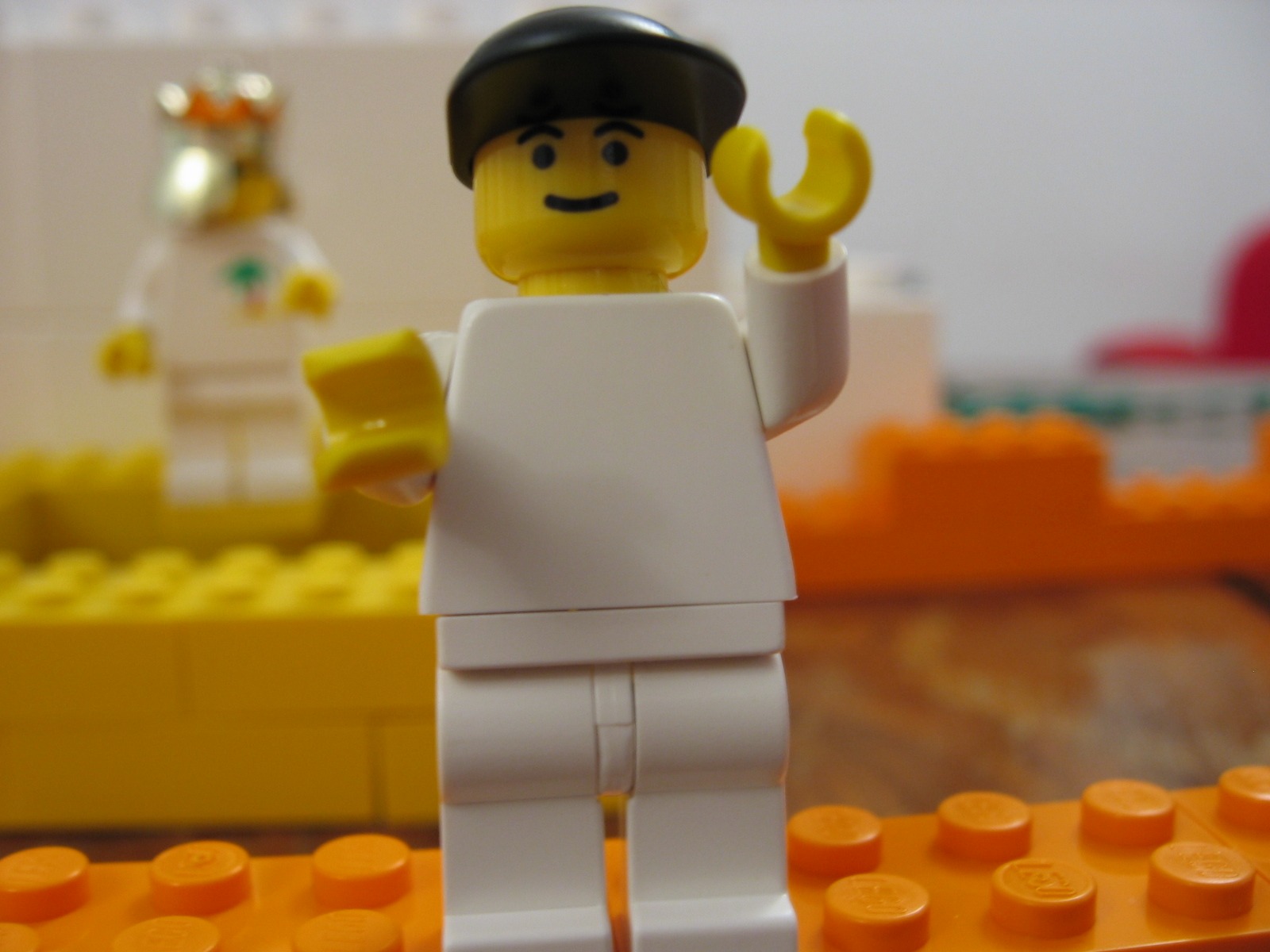

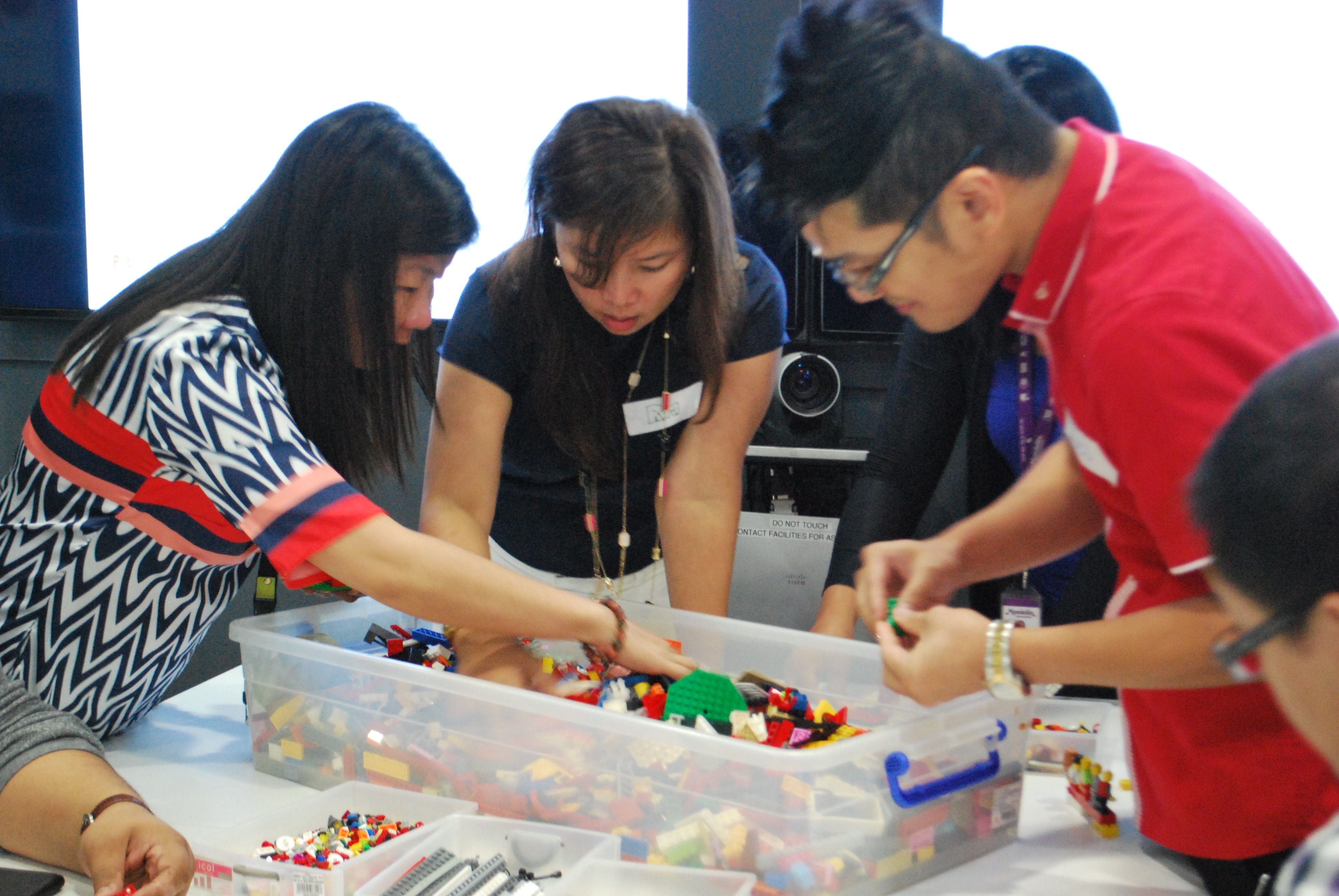

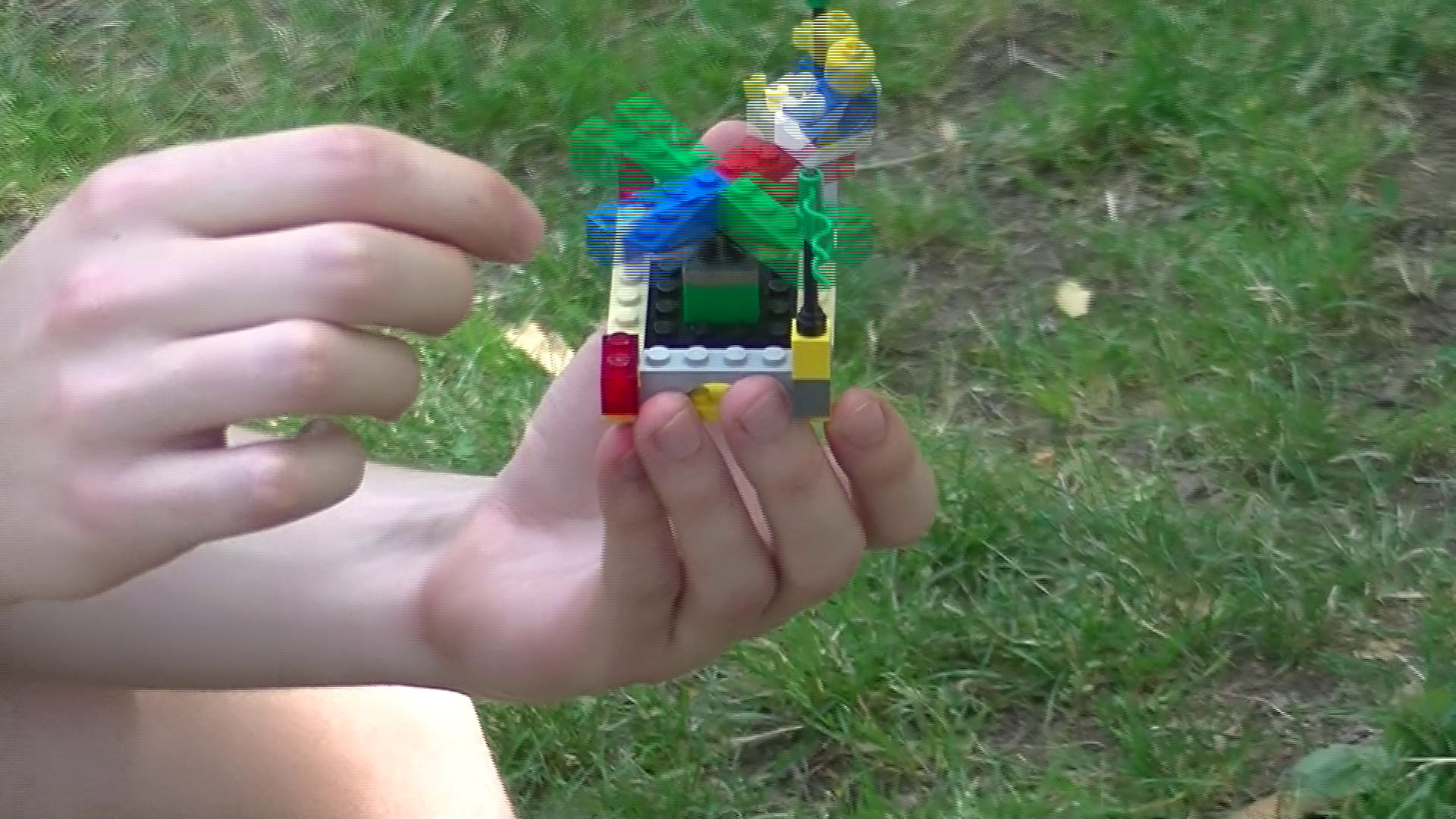

 Become a LEGO Serious Play facilitator - check one of the upcoming training events!
Become a LEGO Serious Play facilitator - check one of the upcoming training events!
Hello Mark! Thanks for sharing. I love this. I recall at an unconfernene a few years back, someone challenged us to do an activity using as few bricks as possible. Very limited choices. It was a refreshing change for me as I am always thinking about how to get more bricks, more diversity, more novelty, etc. Thanks for the reminder that the meaning is in the people and their stories, and people can find a lot of meaning by building with a single style of brick!
Hello Mark! Thanks for sharing. I love this. I recall at an unconference a few years back, someone challenged us to do an activity using as few bricks as possible. Very limited choices. It was a refreshing change for me as I am always thinking about how to get more bricks, more diversity, more novelty, etc. Thanks for the reminder that the meaning is in the people and their stories, and people can find a lot of meaning by building with a single style of brick!
Hi Mark! Very interesting, thanks for sharing. Sometimes we need to go to basics in everything to refresh our minds, our souls and let ideas flow and open to share and listen to others. When I was teaching Kindergarten, I prepared more or less 6 different activities in “math stations” and teams (4 students each) practiced all them during all the week. Once I had a class where I needed to differentiate and integrate more at the same time, I gave 3 students their own materials and stations, they needed it to start feeling comfortable and then integrate to a team. It was a challenge but at the end it worked. LSP audiences are very diverse and looking back to the classroom have helped me to understand and implement to cover different styles and needs. At the end participants engage as you mentioned in your article. Congratulations!
Thanks for sharing Mark. I have been wondering myself about the influence of mini-figs on models that LSP workshop participants build and the stories they share. You inspired me to explore a session without mini-figs and perhaps even use a minimalist set of bricks like you did. A limited set of bricks, as a constraint, might actually push people to be more creative.
Thank you Dieter. Please keep me posted if you do! I’m always amazed at what people can build and sometimes people use the bricks in a way that never occurred to me.
Thanks for sharing Mark. This sounds like a fun and simple exercise. May I know what was the size of your group and if there is an ideal size? What inspired your friend to use pebbles for discussion?
Andy, my group was 10 people. I think that’s about an ideal size and if you have more, I’d split them into groups so that you don’t have to wait too long to hear all the stories.
My friend does this activity whilst hiking in the mountains, hence plenty of stones / pebbles and no Lego! Since I was doing it in a room in an industrial area, I didn’t have any natural elements I could use so I thought of using the Lego bricks. I went for the minimalist approach inspired by the pebbles.
Thanks for clarifying Mark. I’m gonna try this :)
Just came back to re-read this article.
Thank you for the inspiration. Less can be, indeed, more.